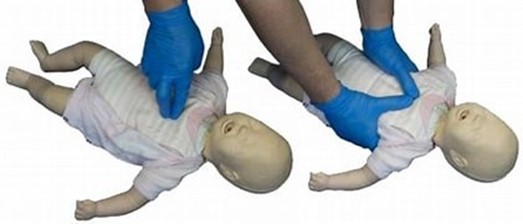A school nurse is performing a routine health assessment for a school-age child.
Which of the following findings indicates the nurse should investigate further for pediculosis capitis?
Dry patches on the scalp.
Pruritus of the scalp.
Bald patches on the scalp.
Blisters on the scalp.
The Correct Answer is B
Pruritus, or itching, of the scalp, is a common symptom of pediculosis capitis, also known as head lice infestation 123.
Choice A is not correct because dry patches on the scalp are not a common symptom of pediculosis capitis 123.
Choice C is not correct because bald patches on the scalp are not a common symptom of pediculosis capitis 123.
Choice D is not correct because blisters on the scalp are not a common symptom of pediculosis capitis 123.
Nursing Test Bank
Naxlex Comprehensive Predictor Exams
Related Questions
Correct Answer is D
Explanation
This is the recommended technique for chest compressions on an infant, as it provides adequate blood flow without causing injury12.
Choice A.
Deliver compressions just above the nipple line is incorrect, as this is not the correct location for chest compressions on an infant.
The correct location is below the nipple line, at the center of the chest.
Choice B.
Deliver compressions with the heel of one hand is incorrect, as this is the technique for chest compressions on a child, not an infant. For an infant, two fingers are used instead of one hand13.
Choice C.
Deliver compressions at a depth of 5 cm (2 in) is incorrect, as this is too deep for an infant’s chest.
The correct depth for an infant is about 4 cm (1.5 in) or 1/3 the depth of the
chest12.
Therefore, choice D is the best answer.

Correct Answer is B
Explanation
Prednisone is a type of steroid medicine that helps decrease severe inflammation and is usually given for a short time while other medicines are started that can take longer to be effective.
Choice A is not an answer because there is no information available that suggests taking a 45-minute nap daily would be beneficial for a child with juvenile idiopathic arthritis.
Choice C is not an answer because it may not be necessary for the child to stay at home on days when their joints are painful.
Choice D is not an answer because applying cool compresses for 20 minutes every hour may not be the most effective way to manage pain and inflammation.
Whether you are a student looking to ace your exams or a practicing nurse seeking to enhance your expertise , our nursing education contents will empower you with the confidence and competence to make a difference in the lives of patients and become a respected leader in the healthcare field.
Visit Naxlex, invest in your future and unlock endless possibilities with our unparalleled nursing education contents today
Report Wrong Answer on the Current Question
Do you disagree with the answer? If yes, what is your expected answer? Explain.
Kindly be descriptive with the issue you are facing.
